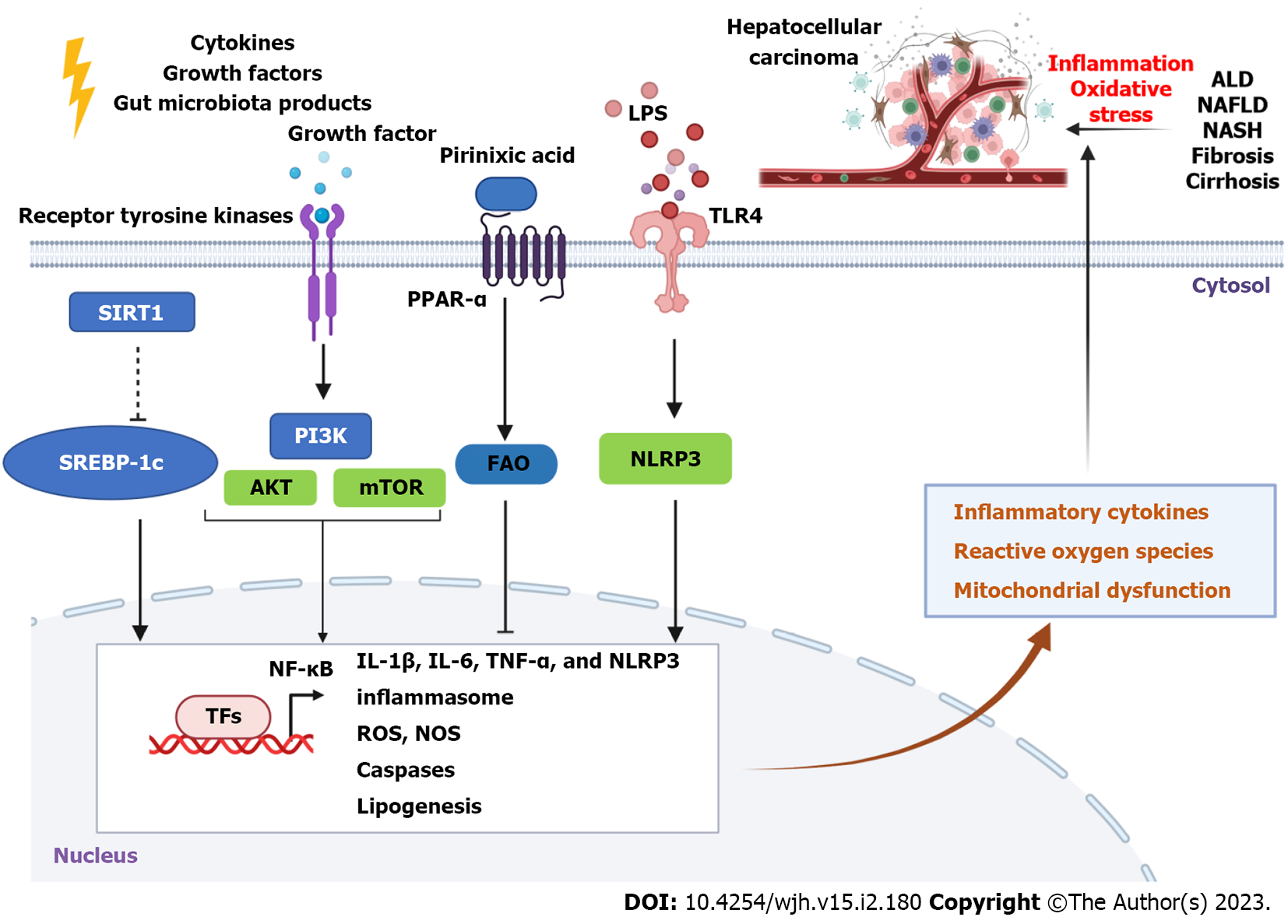Copyright
©The Author(s) 2023.
World J Hepatol. Feb 27, 2023; 15(2): 180-200
Published online Feb 27, 2023. doi: 10.4254/wjh.v15.i2.180
Published online Feb 27, 2023. doi: 10.4254/wjh.v15.i2.180
Figure 2 Molecular signaling pathway in liver inflammation and oxidative stress.
Inflammation and oxidative stress are involved in the development of chronic liver diseases such as alcoholic liver disease, non-alcoholic fatty liver disease, non-alcoholic steatohepatitis, fibrosis, and cirrhosis into hepatocellular carcinoma. Many factors including cytokines, growth factors, and gut microbiota-derived products such as lipopolysaccharide can activate their receptors such as peroxisome proliferator-activated receptor-α and toll-like receptor 4, resulting in upregulation or inhibition of downstream genes to induce or prevent inflammatory cytokines and production of reactive oxygen species. This cartoon was created using Biorender online tools (https://biorender.com). LPS: Lipopolysaccharide; TLR4: Toll-like receptor 4; ALD: Alcoholic liver disease; NAFLD: Non-alcoholic fatty liver disease; NASH: Non-alcoholic steatohepatitis; PPAR-α: Peroxisome proliferator-activated receptor-α; SIRT1: Sirtuin 1; SREBP-1c: Sterol regulatory element binding protein 1c; PI3K: Phosphatidylinositol-3-kinase; AKT: Protein kinase B; mTOR: Mammalian target of rapamycin; FAO: Fatty acid oxidation; NLRP3: NOD-like receptor family pyrin domain containing 3; NF-κB: Nuclear factor kappa B; IL: Interleukin; TNF-α: Tumor necrosis factor-α; NLRP3: NOD-like receptor family pyrin domain containing 3; ROS: Reactive oxygen species; NOS: Nitric oxide synthase.
- Citation: Zhang CY, Liu S, Yang M. Antioxidant and anti-inflammatory agents in chronic liver diseases: Molecular mechanisms and therapy. World J Hepatol 2023; 15(2): 180-200
- URL: https://www.wjgnet.com/1948-5182/full/v15/i2/180.htm
- DOI: https://dx.doi.org/10.4254/wjh.v15.i2.180









